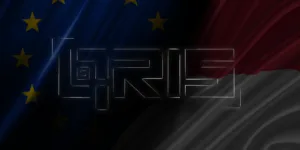Welcome to the 53rd issue of the CEEasia Briefing.
In this issue, we dissect the following topics:
- Xi’s trip to Europe
- Putin’s visit to China
- Japan’s defense cooperation with France and Germany
- Indian-German defense ties
If you like what you see, please forward this message to your friends and colleagues who can subscribe here.
Do you need to know more about East Asia? Don’t hesitate to shoot us a message about custom analysis tailored to your needs.
1. Xi Jinping’s trip to Europe
What’s going on? Between May 5-10, Chinese President Xi Jinping made official visits to France, Serbia and Hungary. The trip was Xi’s first trip to Europe since 2019, when he travelled to France and Italy. But unlike in 2019, this year’s visits came amidst the EU’s increasing willingness to use a variety of its trade defense tools against China.
Going deeper… In 2019, the EU-China relations were significantly warmer than they are now. Xi’s trip back then concluded with several trade deals and Rome’s (since then withdrawn) agreement to participate in the BRI. Fast forward to 2024, Xi is facing a different EU – one that is increasingly concerned about the nature and security implications of its economic ties to Beijing, China’s spy networks and malign activities within the bloc. Against this background, Xi ’s main goal (at least for the Paris leg of his trip) seemed to have been damage control, with the main concern being the EU’s investigations into Chinese subsidies and trade distortions. Indeed, the decision not to visit the former site of a Chinese embassy in Belgrade that was bombed by NATO forces during the Kosovo War, could be seen as part of Xi’s reconciliatory agenda towards the bloc.
In Paris… The French President Emmanuel Macron was joined by the European Commission President Ursula Von der Leyen in an attempt to display unity in the EU’s changed stance on China. The two held negotiations with Xi concerning China’s trade distortions and support for the Russian war in Ukraine. Their concerns were, however, not met by any major concessions from Xi, who downplayed China’s industrial overcapacity and emphasized his 12-point plan for ending the war in Ukraine.
Meanwhile, in Belgrade and Budapest… Xi received a starkly warmer reception. Both countries signed new agreements with China (Hungary 18 and Serbia 28) on a variety of issues ranging from cooperation in energy and infrastructure to agriculture and media. Several of the Sino-Serbian agreements focused on the operationalisation of the FTA signed between the two in October 2023 that is expected to take effect thisJuly. China has also upgraded the official designations of its relations with the two countries, with Sino-Hungarian ties elevated to an “all-weather comprehensive strategic partnership for the new era” and Sino-Serbian ties to a “community with shared future.” These changes in China’s diplomatic nomenclature are important, as the former designation elevates Hungary to the same rank as Pakistan (with only Russia’s designation being of higher rank).
This means… The trip was illustrative of the current trends in Sino-European relations; while Serbia and Hungary double down on their friendly ties with Beijing, the EU pushes for the bloc’s renegotiation of its relationship with China (at least on economic security matters). Whereas these trends are likely to persist, a noticeable divide is emerging within the EU; individual countries such as Hungary and Germany increasingly challenging the EU’s united position on (and a more substantive shift in relations with) China.
2. Putin’s visit to China
What’s going on? From May 16-17 – less than a week after his trip to Europe – Xi hosted his Russian counterpart Vladimir Putin in Beijing. Similarly to Xi’s meetings with Hungarian Prime Minister Viktor Orbán and Serbian President Aleksandar Vučić, the trip saw the two leaders upgrading their partnership for a “new era” and deepening cooperation in several areas.
Going deeper… Putin, who in March started his fifth term in office, was accompanied by several high-ranking officials, including both current and former Ministers of Defence, with defense cooperation being high on the agenda. Several analysts have interpreted Putin’s visit to the Harbin Institute of Technology, an institution sanctioned by the US for its PLA ties, as a sign of a potential future expansion of China’s supply of Russia with dual-use components for military purposes. This would further contradict the calls by both the US and the EU for China to stop supporting Russia’s defense-industrial base with provisions of such components.
At the same time, however… The limits to the two countries’ “no limits” partnership are becoming increasingly apparent, not least on the economic front. This can be seen in China’s continued stalling of further progress on the Power of Siberia 2, which would be a third gas pipeline projects between the two. China is already the biggest importer of Russian crude oil, but such exports come at a significant discount and loss of revenue for Russia. Moreover, although the Sino-Russian economic relations have expanded significantly since the Russian invasion of Ukraine, the Chinese market is unlikely to make up for Russia’s loss of gas exports to Europe, which had previously accounted for around 40% of the Russian budget.
This means… The Sino-Russian partnership will continue deepening and expanding due to geopolitical reasons, with the two countries’ common animosity towards the US driving the relationship forward. At the same time, however, there are limits to this, especially when it comes to the economic ties that heavily rely on the energy cooperation.
3. Japan’s defense cooperation with Germany and France
What’s going on? During his visit to Paris this May, Japan’s Prime Minister Fumio Kishida agreed to start talks on a reciprocal access agreement (RAA) with France. Such an agreement would make it easier for France to conduct military exercises in the Indo-Pacific. Japan is already party to two RAAs -Australia and the United Kingdom.
Meanwhile, Germany and Japan signed an Acquisition and Cross-Servicing Agreement (ACSA) in January. It enables mainly logistical support, such as defense equipment and technology transfers. Japan already has six other ACSA partners, including France and the United Kingdom. Thanks to the ACSA, the German Army is set to take part in a joint exercise with Japan’s Ground Self-Defence Force (SDF) on Japanese soil next year.
Going deeper into the past… This will not be the first time that the German Army will participate in a military exercise with Japan, nor the first time it will be deployed to the Indo-Pacific. In 2021, a German frigate sailed to Japan and South Korea, and then through the South China Sea to promote freedom of navigation. On its way, the German Navy conducted joint exercises with Australian, Singaporean, and Japanese forces. Most recently, in 2023, Japan observed NATO Air Defender drills in Germany.
At the same time… The French Army has also trained with Japan’s SDF in the past. In 2021, Japanese, French, and U.S. troops held their first-ever joint military training in Miyazaki prefecture in southwestern Japan. In 2023, France hosted the Japanese ground forces in French New Caledonia for joint military drills codenamed Brunet-Takamori. The Japanese Air Force (ASDF) also participated in the French Air and Space Force mission Pegase 23 in Southeast Asia, which was the two countries’ first-ever joint fighter jet exercise.
Looking forward… This year, Germany, France, and other European nations are sending their naval forces to the Indo-Pacific to take part in the biennial U.S. Navy-led Rim of the Pacific (RIMPAC) maritime exercise off the coasts of Hawaii. After the drills, German ships are expected to pass through the South China Sea. The German and French air forces are also sending aircraft to Australia in June, to take part in the Pitch Black 24 exercise in Australia.
This means… In light of Russian aggression against Ukraine and China’s growing assertiveness in Asia, Japan has started to pay more attention to its defense and security policy. Since 2022, Japan’s defense budget has grown by 50% and Japan has undertaken several security initiatives with partners such as the U.S., Australia, South Korea, and the Philippines. Tokyo plans to nearly double defense spending to 2% by 2027. At the same time and largely for the same reasons, Berlin and Paris seek to strengthen their presence and security commitments in the Indo-Pacific.
4. Indian-German defense ties
What’s going on? Since the Russia’s war in Ukraine, Berlin and Delhi have been strengthening their defense partnership. In addition to signing an MoU for collaboration in construction of advanced submarines for the Indian navy in 2023 in Delhi, the two countries are now planning to conduct joint military exercises in the coming months.
Going deeper… Minister Boris Pistorius was the first German Defense Minister in almost a decade to visit India in June 2023. During the visit he confirmed that German ThyssenKrupp Marine Systems will cooperate with the Indian state-owned Mazagon Dock in a bid worth more than $5 billion to produce submarines for the Indian navy. Recent statements of German and Indian representatives have followed in the same fashion, highlighting that there is a strong political will to boost defense cooperation. The two countries also plan to conduct joint military exercises – multilateral drills hosted by the Indian Air Force with the synchronous participation of France, the US, and Italy in August and a bilateral naval exercise in October near the Indian western state of Goa.
Moreover… Until now, the India-German cooperation was minimal. Both countries were looking in different directions – India’s key defense partners were (and still are) Russia, France and Israel whereas Germany’s engagement is rooted in Euro-Atlantic preference. However, the Russian war in Ukraine has changed this, bringing more attention to growing Chinese assertiveness in the Indo-Pacific. As a result, Germany is seemingly stepping up its presence there, demonstrating its interest in upholding stability. And India has been for a long time eager to diversify and modernize its defense industry. With its traditional partner – Russia, facing a number of hurdles since its invasion of Ukraine (tightened budget, production capabilities, and increased international isolation) the shift to western technologies has been a natural choice for Delhi.
This means… India is the world’s largest arms importer and Germany the fourth biggest arms exporter. However, the question now remains how Germany (and Europe in general) will navigate and balance the partnership with India in the future. For now, the joint communiqué issued after Pistorius’ visit shows that, more than criticism of Russia, the incentives for cooperation with India are dominated by efforts to balance China and its growing territorial claims – a rhetoric pursued mainly by New Delhi.
Quick takes on CEEasia developments
CHINA | China launched an anti-dumping probe into plastics imported from the EU, the US, Japan, and Taiwan. Announced in mid-May, the probe follows similar trade investigations into Chinese tinplate steel, flooring wood, procurement of medical equipment, renewables, and EV subsidies by the EU and the US increased tariffs on EVs, chips and other imported products from China in the past half-year.
CHINA | Two British and three German nationals were arrested and accused of spying for China, with one of the German nationals accused of providing information on dual-use technology for China’s prime intelligence agency, the Ministry of State Security. The Chinese aide of the German MEP from the far-right AfD party, Maximilian Krah, was also arrested on suspicion of espionage.
INDO-PACIFIC | Germany sent two warships to the Indo-Pacific region in the beginning of May to strengthen its military presence and demonstrate interest in safeguarding its vital trade routes, as tensions in the Taiwan Strait and South China Sea are on the rise.
SOUTH KOREA | South Korea and the UK co-hosted a second AI Summit in Seoul. In this two-day gathering, government officials from twenty countries as well as industry leaders of sixteen AI companies discussed safety, transparency and accountability of AI development.
SOUTH KOREA | South Korean banks such as Kookmin Bank or Export-Import Bank of Korea plan to open ‘Korea Desks’ in Poland. To facilitate the collaboration of the banking sectors, the Korea Federation of Banks and the Polish Bank Association signed a Memorandum of Understanding in March this year.
TAIWAN | CzechInvest, the Investment and Business Development Agency of the Czech Ministry of Industry and Trade, inaugurated its first office in Taiwan in mid-May. The office, which is the third CzechInvest’s branch operating in Asia, aims to boost trade, technology development, and investment opportunities with Taiwan, especially in chip-making.












